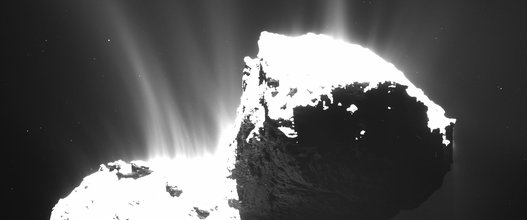W&T Wetenschap & Technologie
Een plek om te discussiėren over wetenschappelijke onderwerpen, wetenschappelijke problemen, technologische projecten en grootse uitvindingen.



niks tegenvallend aan, hij heeft vrijwel alles kunnen doen wat de bedoeling was.
DeLuna vindt me dik ;(
Op zondag 22 juni 2014 12:30 schreef 3rdRock het volgende:
pas als jullie gaan trouwen. nu ben je gewoon die Oom Rubber die met onze mama leuke dingen doet :)
Op zondag 22 juni 2014 12:30 schreef 3rdRock het volgende:
pas als jullie gaan trouwen. nu ben je gewoon die Oom Rubber die met onze mama leuke dingen doet :)


Mwah.. het was toch beter geweest als we middels Philae DE manier hadden gevonden om op een dergelijk lichaam te landen. Helaas moeten we nu dus naar andere mogelijkheden kijken.


Technisch falen heeft natuurlijk weinig te maken met de gebruikte methode.quote:Op dinsdag 20 december 2016 11:49 schreef Wildekamp het volgende:
Mwah.. het was toch beter geweest als we middels Philae DE manier hadden gevonden om op een dergelijk lichaam te landen. Helaas moeten we nu dus naar andere mogelijkheden kijken.
100.000 katjes
Fuck the EBU!
Fuck the EBU!


Dat zeker, maar zonder die kers was de taart nog steeds zeer smakelijk. Voor hetzelfde geld was het nooit gelukt om in orbit rond die komeet te geraken. Laten we niet vergeten dat die komeet een enorme snelheid heeft, en zo goed als geen eigen zwaartekrachtveld.quote:Op dinsdag 20 december 2016 21:20 schreef qajariaq het volgende:
Philae langdurig laten meten op het oppervlak had toch wel de kers op de taart geweest neem ik aan.
Men heeft ongelofelijk veel onderzoek kunnen doen, en ook Philae, hoewel de landing niet is geslaagd, heeft daarbij wel degelijk nut gehad.
Als men bij vertrek had geweten dat dit het resultaat zou zijn dan had men daar zonder twijfel voor getekend. De missie was succesvoller dan men toen durfde te dromen.
Niet meer aanwezig in dit forum.


Ik ben nieuw in dit topic en het spijt me als ik dingen ophaal die al besproken zijn....
Wat als....
Rosetta door ons "onderzoek" over jaren en jaren neerstort op de aarde en daarmee de aarde beschadigd.....?
Iedereen maakt zich druk om nu.... Stelletje ego's
Wat als....
Rosetta door ons "onderzoek" over jaren en jaren neerstort op de aarde en daarmee de aarde beschadigd.....?
Iedereen maakt zich druk om nu.... Stelletje ego's


hij zit niet in een baan die hem op aarde brengtquote:Op donderdag 22 december 2016 04:15 schreef Outpost76 het volgende:
Ik ben nieuw in dit topic en het spijt me als ik dingen ophaal die al besproken zijn....
Wat als....
Rosetta door ons "onderzoek" over jaren en jaren neerstort op de aarde en daarmee de aarde beschadigd.....?
Iedereen maakt zich druk om nu.... Stelletje ego's
DeLuna vindt me dik ;(
Op zondag 22 juni 2014 12:30 schreef 3rdRock het volgende:
pas als jullie gaan trouwen. nu ben je gewoon die Oom Rubber die met onze mama leuke dingen doet :)
Op zondag 22 juni 2014 12:30 schreef 3rdRock het volgende:
pas als jullie gaan trouwen. nu ben je gewoon die Oom Rubber die met onze mama leuke dingen doet :)


Dat is wat de mensheid nu berekend heeft. Maar wat als hij door onze tussen komst een andere komeet oid tegenkomt? Daardoor van baan veranderd met alle gevolgen van dien? Of die andere komeet oid daardoor veranderd van baan met alle gevolgen van dien...quote:Op donderdag 22 december 2016 08:54 schreef rubbereend het volgende:
[..]
hij zit niet in een baan die hem op aarde brengt
Is er ooit zo ver door gedacht?


Wat is dat nou weer voor een raar vraagstuk?quote:Op vrijdag 30 december 2016 01:14 schreef Outpost76 het volgende:
[..]
Dat is wat de mensheid nu berekend heeft. Maar wat als hij door onze tussen komst een andere komeet oid tegenkomt? Daardoor van baan veranderd met alle gevolgen van dien? Of die andere komeet oid daardoor veranderd van baan met alle gevolgen van dien...
Is er ooit zo ver door gedacht?
Het zou net zo goed kunnen dat een dergelijke gebeurtenis door Rosetta's invloed juist is voorkomen.
gr gr


Raar? Ik vind het een serieus vraagstuk wat men moet beantwoorden alvorens men weer zo iets onderneemt. Wat is er raar aan om ook in de toekomst te kijken met de berekeningen die men doet voor zo een taak? Ik vind het niet meer dan normaal als men dat doet!quote:Op vrijdag 30 december 2016 01:43 schreef Quyxz_ het volgende:
[..]
Wat is dat nou weer voor een raar vraagstuk?
Het zou net zo goed kunnen dat een dergelijke gebeurtenis door Rosetta's invloed juist is voorkomen.
Eens, maar dat berekenen en bekend maken alvorens men zo iets doet is wel zo wenselijk.
Zeggen dat iets veilig is heeft in het verleden al vaker gebleken dat dat niet altijd zo is....


22-02-2017
Verrassende duinen op komeet 67P
Links: opname van komeet 67P, die stof en waterdamp uitstoot. Rechts: een deel van de ‘hals’ van de komeet, waar een klein duinenlandschap te zien is. (ESA/Rosetta/NAVCAM)
Opmerkelijke beelden van de ruimtesonde Rosetta laten zien dat het oppervlak van de komeet 67P/Churyumov-Gerasimenko een soort duinenrijen vertoont. Dat blijkt uit onderzoek door Franse wetenschappers, die ook modellen hebben gemaakt die het verschijnsel proberen te verklaren. Ze geven aan dat door het grote drukverschil tussen de zonkant van de komeet en gebieden die in de schaduw liggen er een wind kan optreden die oppervlaktedeeltjes meesleept (PNAS, 21 februari).
Normaal gesproken is er voor het ontstaan van wind een atmosfeer nodig, en die hebben kometen niet – althans niet permanent. Wanneer echter het oppervlak van een komeet door de zon wordt beschenen, sublimeert het daarin aanwezig ijs, waardoor een tijdelijke atmosfeer ontstaat. Deze is weliswaar heel ijl, maar daar staat tegenover dat de zwaartekracht van een komeet heel zwak is. Er is dus niet veel voor nodig om deeltjes in beweging te brengen.
De Franse modelberekeningen laten zien dat de winden die door de temperatuurverschillen in de ijle komeetatmosfeer ontstaan, krachtig genoeg zijn om deeltjes met afmetingen tot een centimeter in beweging te zetten. De voortrollende deeltjes hopen zich bij obstakels op, waardoor er uiteindelijk duinen ontstaan – ongeveer net zoals dat met zandkorrels op aarde gebeurt. (EE)
(allesoversterrenkunde)
Verrassende duinen op komeet 67P
Links: opname van komeet 67P, die stof en waterdamp uitstoot. Rechts: een deel van de ‘hals’ van de komeet, waar een klein duinenlandschap te zien is. (ESA/Rosetta/NAVCAM)
Opmerkelijke beelden van de ruimtesonde Rosetta laten zien dat het oppervlak van de komeet 67P/Churyumov-Gerasimenko een soort duinenrijen vertoont. Dat blijkt uit onderzoek door Franse wetenschappers, die ook modellen hebben gemaakt die het verschijnsel proberen te verklaren. Ze geven aan dat door het grote drukverschil tussen de zonkant van de komeet en gebieden die in de schaduw liggen er een wind kan optreden die oppervlaktedeeltjes meesleept (PNAS, 21 februari).
Normaal gesproken is er voor het ontstaan van wind een atmosfeer nodig, en die hebben kometen niet – althans niet permanent. Wanneer echter het oppervlak van een komeet door de zon wordt beschenen, sublimeert het daarin aanwezig ijs, waardoor een tijdelijke atmosfeer ontstaat. Deze is weliswaar heel ijl, maar daar staat tegenover dat de zwaartekracht van een komeet heel zwak is. Er is dus niet veel voor nodig om deeltjes in beweging te brengen.
De Franse modelberekeningen laten zien dat de winden die door de temperatuurverschillen in de ijle komeetatmosfeer ontstaan, krachtig genoeg zijn om deeltjes met afmetingen tot een centimeter in beweging te zetten. De voortrollende deeltjes hopen zich bij obstakels op, waardoor er uiteindelijk duinen ontstaan – ongeveer net zoals dat met zandkorrels op aarde gebeurt. (EE)
(allesoversterrenkunde)
Death Makes Angels of us all
And gives us wings where we had shoulders
Smooth as raven' s claws...
And gives us wings where we had shoulders
Smooth as raven' s claws...


Before and after: unique changes spotted on Comet 67P/C-G
[ Bericht 26% gewijzigd door -CRASH- op 22-03-2017 11:26:26 ]
Collapsing cliff reveals comets interiorquote:
21 March 2017
Growing fractures, collapsing cliffs, rolling boulders and moving material burying some features on the comet’s surface while exhuming others are among the remarkable changes documented during Rosetta’s mission.
A study published in Science today summarises the types of surface changes observed during Rosetta’s two years at Comet 67P/Churyumov-Gerasimenko. Notable differences are seen before and after the comet’s most active period – perihelion – as it reached its closest point to the Sun along its orbit.
“Monitoring the comet continuously as it traversed the inner Solar System gave us an unprecedented insight not only into how comets change when they travel close to the Sun, but also how fast these changes take place,” says Ramy El-Maarry, study leader
The changes, which were either unique transient phenomena or taking place over longer periods, are linked to different geological processes: in situ weathering and erosion, sublimation of water-ice, and mechanical stresses arising from the comet’s spin.
In situ weathering occurs all over the comet, where consolidated materials are weakened – such as by heating and cooling cycles on daily or seasonal timescales – causing their fragmentation. Combined with heating of subsurface ices that lead to outflows of gas, this can ultimately result in the sudden collapse of cliff walls, the evidence of which is apparent in several locations on the comet.
A completely different process is thought to be responsible for the 500 m-long fracture spotted in August 2014 that runs through the comet’s neck in the Anuket region, and which was found to have extended by about 30 m by December 2014. This is linked to the comet’s increasing spin rate in the lead up to perihelion.
Furthermore, in images taken in June 2016, a new 150–300 m-long fracture was identified parallel to the original fracture.
Close to the fractures, a 4 m-wide boulder moved by about 15 m, as determined by comparing images taken in March 2015 and June 2016. It is not clear if the fracture extension and movement of the boulder are related to each other or caused by different processes.
A substantially larger boulder, some 30 m wide and weighing 12 800 tonnes, was found to have moved an impressive 140 m in the Khonsu region, on the larger of the two comet lobes.
It is thought that the boulder moved during the perihelion period, as several outburst events were detected close to its original position. The movement could have been triggered in one of two ways: either the material on which it was sitting eroded away, allowing it to roll downslope, or a forceful outburst could have directly lifted it to the new location.
Erosion caused by the sublimation of material, and deposition of dust falling from outbursts, are also thought to be responsible for sculpting the landscape in different ways, either uncovering previously hidden surfaces or depositing material elsewhere.
For example, scarps in several smooth plains have been observed to retreat by tens of metres and at a rate of up to a few metres per day around perihelion.
"Scarp retreats were observed before on Comet Tempel 1, inferred by comparing images taken during flybys of the comet by NASA's Deep Impact in 2005, and Stardust-NExT in 2011," says Ramy. "What we were able to do with Rosetta was to monitor similar changes continuously, and at a higher resolution.
"Our observations additionally tell us that scarp retreat seems to be a common process on comets, specifically in smooth-looking deposits."
Furthermore, in the smooth plains of Imhotep, previously hidden circular features, along with small boulders, have been exposed by the removal of material.
In one location, a depth of about three metres had been removed, most likely through the sublimation of underlying ices.
Changes were also noted in the comet's smooth neck region near the distinctive ripples that were likened to Earth's sand dunes when they were first identified. Close monitoring of the ripple formations showed this location to also display expanding circular features in the soft material that reached diameters of 100 m in less than three months. They subsequently faded away to give rise to new sets of ripples.
Scientists speculate that the repeated development of these unique features at the same spot must be linked to the curved structure of the neck region directing the flow of sublimating gas in a particular way.
Another type of change is the development of honeycomb-like features noticed in the dusty terrains of the Ma'at region on the comet's small lobe in the northern hemisphere, marked by an increase in surface roughness in the six months leading up to perihelion.
Similar to other seasonal changes, these features faded substantially after perihelion, presumably as a result of resurfacing by the deposition of new particles ejected from the southern hemisphere during this active period.
The scientists also note that although many small-scale localised changes have occurred, there were no major shape-changing events that significantly altered the comet's overall appearance. Ground-based observations over the last few decades suggest similar levels of activity during each perihelion, so they think that the major landforms seen during Rosetta's mission were sculpted during a different orbital configuration.
"One possibility could be that earlier perihelion passages were much more active, perhaps when the comet had a larger inventory of more volatile materials in the past," speculates Ramy.
"This documentation of changes over time was a key goal of Rosetta's mission, and shows the surface of comets as geologically active, on both seasonal and short transient timescales," says Matt Taylor, ESA's Rosetta Project Scientist.
quote:
21 March 2017
Rosetta scientists have made the first compelling link between an outburst of dust and gas and the collapse of a prominent cliff, which also exposed the pristine, icy interior of the comet.
Sudden and short-lived outbursts were observed frequently during Rosetta's two-year mission at Comet 67P/Churyumov-Gerasimenko. Although their exact trigger has been much debated, the outbursts seem to point back to the collapse of weak, eroded surfaces, with the sudden exposure and heating of volatile material likely playing a role.
In a study published today in Nature Astronomy, scientists make the first definitive link between an outburst and a crumbling cliff face, which is helping us to understand the driving forces behind such events.
The first close images of the comet taken in September 2014 revealed a 70 m-long, 1 m-wide fracture on the prominent cliff-edge subsequently named Aswan, in the Seth region of the comet, on its large lobe.
Over the course of the following year as the comet drew ever closer to the Sun along its orbit, the rate at which its buried ices turned to vapour and dragged dust out into space increased along the way. Sporadic and brief, high-speed releases of dust and gas punctuated this background activity with outbursts.
One such outburst was captured by Rosetta's navigation camera on 10 July 2015, which could be traced back to a portion of the comet's surface that encompassed the Seth region.
The next time the Aswan cliff was observed, five days later, a bright and sharp edge was spotted where the previously identified fracture had been, along with many new metre-sized boulders at the foot of the 134 m-high cliff.
"The last time we saw the fracture intact was on 4 July, and in the absence of any other outburst events recorded in the following ten-day period, this is the most compelling evidence that we have that the observed outburst was directly linked to the collapse of the cliff," says Maurizio Pajola, the study leader.
The event also provided a unique opportunity to study how the pristine water-ice otherwise buried tens of metres inside the comet evolved as the exposed material turned to vapour over the following months.
Indeed, after the event, the exposed cliff face was calculated to be at least six times brighter than the overall average surface of the comet nucleus. By 26 December 2015 the brightness had faded by half, suggesting much of the water-ice had already vapourised by that time.
And by 6 August 2016, most of the new cliff face had faded back to the average, with only one large, brighter block remaining.
In addition, the team had a clear 'before and after' look at how the crumbling material settled at the foot of the cliff. By counting the number of new boulders seen after its collapse, the team estimated that 99% of the fallen debris was distributed at the bottom of the cliff, while 1% was lost to space.
This corresponds to around 10,000 tonnes of removed cliff material, with at least 100 tonnes that did not make it to the ground, consistent with estimates made for the volume of dust in the observed plume.
Furthermore, the size range of the new debris, between 3 m and 10 m, is consistent with the distributions observed at the foot of several other cliffs identified on the comet.
"We see a similar trend at the foot of other cliffs that we have not been so fortunate to have before and after images, so this is an important validation of cliff collapse as a producer of these debris fields," says Maurizio.
But what actually led to the cliff suddenly collapsing at this particular moment?
An earlier study suggested that both rapid daily changes in heating or longer-term seasonal changes can create thermal stresses that lead to fracturing and subsequent exposure of volatile materials, triggering a rapid outburst that can cause the weakened cliff to collapse.
Even though the Aswan cliff region had been experiencing large temperature changes in the months before the collapse, interestingly, the collapse occurred at local night, ruling out a sudden extreme temperature change as the immediate trigger.
Instead, both daily and seasonal temperature variations may have propagated fractures deeper into the subsurface than previously considered, predisposing it to the subsequent collapse.
"If the fractures permeated volatile-rich layers, heat could have been transferred to these deeper layers, causing a loss of deeper ice," explains Maurizio. "The gas released by the vapourising material could further widen the fractures, leading to a cumulative effect that eventually led to the cliff collapse.
"Thanks to this particular event at Aswan, we think that the cumulative effect led by strong thermal gradients could be one of the most important weakening factors of the cliff structure."
"Rosetta's images already suggested that cliff collapses are important in shaping cometary surfaces, but this particular event has provided the missing 'before-after' link between such a collapse, the debris seen at the foot of the cliff, and the associated dust plume, supporting a general mechanism where comet outbursts can indeed be generated by collapsing material," says Matt Taylor, ESA's Rosetta project scientist.
[ Bericht 26% gewijzigd door -CRASH- op 22-03-2017 11:26:26 ]
<a href="http://www.vwkweb.nl/" rel="nofollow" target="_blank">[b]Vereniging voor weerkunde en klimatologie[/b]</a>
<a href="http://www.estofex.org/" rel="nofollow" target="_blank">[b]ESTOFEX[/b]</a>
<a href="http://www.estofex.org/" rel="nofollow" target="_blank">[b]ESTOFEX[/b]</a>


22-03-2017
Rosetta ziet klif instorten op komeet 67P
De Rosetta-ruimtesonde cirkelde een paar jaar om komeet 67P en zag van alles gebeuren op het oppervlak. Zo spotte het ruimtevaartuig een instortende klif.
De zogenoemde Aswan-klif heeft een hoogte van 134 meter. Daarmee is de klif iets hoger dan de Utrechtse Dom. Stel, de Domtoren zou bij de voet van de klif zijn gebouwd, dan zou dit er ongeveer zo uitzien:
Op 21 september 2014 zagen wetenschappers een scheur op een meter van de afgrond. De laatste foto van de scheur is gemaakt op 4 juli 2015. Op 10 juli 2015 fotografeerde Rosetta een pluim van gas en stof nabij de Aswan-klif. ESA-onderzoekers vermoeden dat deze pluim is ontstaan toen de klif instortte. Op foto’s die eind december 2015 en midden 2016 zijn gemaakt is de scheur namelijk niet meer te zien.
Bekijk een grote versie van deze foto.
Ruimtesonde Rosetta arriveerde in 2014 bij komeet 67P/C-G en vergezelde deze op zijn reis richting de zon. In september vorig jaar kwam er een einde aan de missie met de zachte landing van Rosetta op komeet 67P/C-G. Maar dit onderzoek laat maar weer eens zien dat de Rosetta-missie ook nadat deze ten einde kwam nog voldoende verrassingen voor ons in petto heeft.
(scientias.nl)
Rosetta ziet klif instorten op komeet 67P
De Rosetta-ruimtesonde cirkelde een paar jaar om komeet 67P en zag van alles gebeuren op het oppervlak. Zo spotte het ruimtevaartuig een instortende klif.
De zogenoemde Aswan-klif heeft een hoogte van 134 meter. Daarmee is de klif iets hoger dan de Utrechtse Dom. Stel, de Domtoren zou bij de voet van de klif zijn gebouwd, dan zou dit er ongeveer zo uitzien:
Op 21 september 2014 zagen wetenschappers een scheur op een meter van de afgrond. De laatste foto van de scheur is gemaakt op 4 juli 2015. Op 10 juli 2015 fotografeerde Rosetta een pluim van gas en stof nabij de Aswan-klif. ESA-onderzoekers vermoeden dat deze pluim is ontstaan toen de klif instortte. Op foto’s die eind december 2015 en midden 2016 zijn gemaakt is de scheur namelijk niet meer te zien.
Bekijk een grote versie van deze foto.
Ruimtesonde Rosetta arriveerde in 2014 bij komeet 67P/C-G en vergezelde deze op zijn reis richting de zon. In september vorig jaar kwam er een einde aan de missie met de zachte landing van Rosetta op komeet 67P/C-G. Maar dit onderzoek laat maar weer eens zien dat de Rosetta-missie ook nadat deze ten einde kwam nog voldoende verrassingen voor ons in petto heeft.
(scientias.nl)
Death Makes Angels of us all
And gives us wings where we had shoulders
Smooth as raven' s claws...
And gives us wings where we had shoulders
Smooth as raven' s claws...


08-05-2017
Verklaring gevonden voor zuurstofproductie op Rosetta-komeet
Komeet 67P/Chruyumov-Gerasimenko, gefotografeerd door de Europese ruimtesonde Rosetta. (ESA)
Een Californische chemicus heeft een verklaring gevonden voor de aanwezigheid van moleculair zuurstofgas in de nabijheid van komeet 67P/Churyumov-Gerasimenko. Zuurstofmoleculen (O2) zijn in de ruimte extreem instabiel; toch werden ze dicht bij het komeetoppervlak ontdekt door de Europese komeetverkenner Rosetta. Aanvankelijk werd aangenomen dat de zuurstofmoleculen mogelijk al lange tijd bestonden, en dat ze van het komeetoppervlak waren losgeraakt onder invloed van de zonnewarmte.
Konstantinos Giapis van het California Institute of Technology, die zich normaal gesproken bezighoudt met scheikundige processen aan het oppervlak van halfgeleiders, presenteert in Nature Communications nu een sluitende verklaring voor de aanwezigheid van zuurstof, gebaseerd op laboratoriumexperimenten.
IJs aan het komeetoppervlak sublimeert onder invloed van zonlicht, waardoor waterdampmoleculen vrijkomen (H2O). Door energierijke ultraviolette fotonen in het zonlicht raken die geļoniseerd (ze verliezen één of meer elektronen, waardoor ze een elektrische lading krijgen). Mede onder invloed van het zwakke magneetveld van de zon wordt een deel van de geļoniseerde moleculen teruggeblazen naar het komeetoppervlak. Daar gaan ze een reactie aan met zuurstofatomen in bijvoorbeeld zandkorrels. De geļoniseerde moleculen pikken een zuurstofatoom op, en vallen vervolgens uiteen in waterstof (H2) en zuurstof (O2).
Dat zuurstofgas ook geproduceerd kan worden zonder dat er sprake is van biologische processen, kan in de toekomst van belang zijn bij het onderzoek aan de atmosferen van exoplaneten, aldus Giapis. (GS)
(allesoversterrenkunde)
Verklaring gevonden voor zuurstofproductie op Rosetta-komeet
Komeet 67P/Chruyumov-Gerasimenko, gefotografeerd door de Europese ruimtesonde Rosetta. (ESA)
Een Californische chemicus heeft een verklaring gevonden voor de aanwezigheid van moleculair zuurstofgas in de nabijheid van komeet 67P/Churyumov-Gerasimenko. Zuurstofmoleculen (O2) zijn in de ruimte extreem instabiel; toch werden ze dicht bij het komeetoppervlak ontdekt door de Europese komeetverkenner Rosetta. Aanvankelijk werd aangenomen dat de zuurstofmoleculen mogelijk al lange tijd bestonden, en dat ze van het komeetoppervlak waren losgeraakt onder invloed van de zonnewarmte.
Konstantinos Giapis van het California Institute of Technology, die zich normaal gesproken bezighoudt met scheikundige processen aan het oppervlak van halfgeleiders, presenteert in Nature Communications nu een sluitende verklaring voor de aanwezigheid van zuurstof, gebaseerd op laboratoriumexperimenten.
IJs aan het komeetoppervlak sublimeert onder invloed van zonlicht, waardoor waterdampmoleculen vrijkomen (H2O). Door energierijke ultraviolette fotonen in het zonlicht raken die geļoniseerd (ze verliezen één of meer elektronen, waardoor ze een elektrische lading krijgen). Mede onder invloed van het zwakke magneetveld van de zon wordt een deel van de geļoniseerde moleculen teruggeblazen naar het komeetoppervlak. Daar gaan ze een reactie aan met zuurstofatomen in bijvoorbeeld zandkorrels. De geļoniseerde moleculen pikken een zuurstofatoom op, en vallen vervolgens uiteen in waterstof (H2) en zuurstof (O2).
Dat zuurstofgas ook geproduceerd kan worden zonder dat er sprake is van biologische processen, kan in de toekomst van belang zijn bij het onderzoek aan de atmosferen van exoplaneten, aldus Giapis. (GS)
(allesoversterrenkunde)
Death Makes Angels of us all
And gives us wings where we had shoulders
Smooth as raven' s claws...
And gives us wings where we had shoulders
Smooth as raven' s claws...


Rosetta finds comet connection to earth's atmosphere
quote:08 June 2017
The challenging detection, by ESA's Rosetta mission, of several isotopes of the noble gas xenon at Comet 67P/Churyumov-Gerasimenko has established the first quantitative link between comets and the atmosphere of Earth. The blend of xenon found at the comet closely resembles U-xenon, the primordial mixture that scientists believe was brought to Earth during the early stages of Solar System formation. These measurements suggest that comets contributed about one fifth the amount of xenon in Earth's ancient atmosphere.
Xenon – a colourless, odourless gas which makes up less than one billionth of the volume of Earth's atmosphere – might hold the key to answer a long-standing question about comets: did they contribute to the delivery of material to our planet when the Solar System was taking shape, some 4.6 billion years ago? And if so, by how much?
The noble gas xenon is formed in a variety of stellar processes, from the late phases of low- and intermediate-mass stars to supernova explosions and even neutron star mergers. Each of these phenomena gives rise to different isotopes of the element [1]. As a noble gas, xenon does not interact with other chemical species, and is therefore an important tracer of the material from which the Sun and planets originated, which in turns derives from earlier generations of stars.
"Xenon is the heaviest stable noble gas and perhaps the most important because of its many isotopes that originate in different stellar processes: each one provides an additional piece of information about our cosmic origins," says Bernard Marty from CRPG-CNRS and Université de Lorraine, France. Bernard is the lead author of a paper reporting Rosetta's discovery of xenon at Comet 67P/C-G, which is published today in Science
It is because of this special 'fingerprint' that scientists have been using xenon to investigate the composition of the early Solar System, which provides important clues to constrain its formation. Over the past decades, they sampled the relative abundances of its various isotopes at different locations: in the atmosphere of Earth and Mars, in meteorites deriving from asteroids, at Jupiter, and in the solar wind – the flow of charged particles streaming from the Sun.
The blend of xenon present in the atmosphere of our planet contains a higher abundance of heavier isotopes with respect to the lighter ones; however, this is a result of lighter elements escaping more easily from Earth's gravitational pull and being lost to space in greater amounts. By correcting the atmospheric composition of xenon for this runaway effect, scientists in the 1970s calculated the composition of the primordial mixture of this noble gas, known as U-xenon, that was once present on Earth.
This U-xenon contained a similar mix of light isotopes to that of asteroids and the solar wind, but included significantly smaller amounts of the heavier isotopes.
"For these reasons, we have long suspected that xenon in the early atmosphere of Earth could have a different origin from the average blend of this noble gas found in the Solar System," says Bernard.
One of the explanations is that Solar System xenon derives directly from the protosolar cloud, a mass of gas and dust that gave rise to the Sun and planets, while the xenon found in the Earth's atmosphere was delivered at a later stage by comets, which in turn might have formed from a different mix of material.
With ESA's Rosetta mission visiting Comet 67P/Churyumov-Gerasimenko, an icy fossil of the early Solar System, scientists could finally gather the long-sought data to test this hypothesis.
"Searching for xenon at the comet was one of the most crucial and challenging measurements we performed with Rosetta," says Kathrin Altwegg from the University of Bern, Switzerland, principal investigator of ROSINA, the Rosetta Orbiter Spectrometer for Ion and Neutral Analysis, which was used for this study.
Xenon is very diffuse in the comet's thin atmosphere, so the navigation team had to fly Rosetta very close – 5 km to 8 km from the surface of the nucleus – for a period of three weeks so that ROSINA could obtain a significant detection of all the relevant isotopes.
Flying so close to the comet was extremely challenging because of the large amount of dust that was lifting off the surface at the time, which could confuse the star trackers that were used to orient the spacecraft.
Eventually, the Rosetta team decided to perform this operation in the second half of May 2016. This period was chosen as a compromise so that enough time would have passed after the comet's perihelion, in August 2015, for the dust activity to be less intense, but not too much for the atmosphere to be excessively thin and the presence of xenon hard to detect.
As a result of the observations, ROSINA identified seven isotopes of xenon, as well as several isotopes of another noble gas, krypton; these brought to three the inventory of noble gases found at Rosetta's comet, following the discovery of argon from measurements performed in late 2014.
"These measurements required a long stretch of dedicated time solely for ROSINA, and it would have been very disappointing if we hadn't detected xenon at Comet 67P/C-G, so I'm really glad that we succeeded in detecting so many isotopes," adds Kathrin.
Further analysis of the data revealed that the blend of xenon at Comet 67P/C-G, which contains larger amounts of light isotopes than heavy ones, is quite different from the average mixture found in the Solar System. A comparison with the on-board calibration sample confirmed that the xenon detected at the comet is also different from the current mix in the Earth's atmosphere.
By contrast, the composition of xenon detected at the comet seems to be closer to the composition that scientists think was present in the early atmosphere of Earth.
"This is a very exciting result because it is the first discovery of a candidate for the hypothesised U-xenon," explains Bernard.
"There are some discrepancies between the two compositions, which indicate that the primordial xenon delivered to our planet could derive from a combination of impacting comets and asteroids."
In particular, Bernard and his colleagues were able to establish the first quantitative link between comets and our planet's gaseous shroud: based on the Rosetta measurements at Comet 67P/C-G, 22 percent of the xenon once present in Earth's atmosphere could originate from comets – the rest being delivered by asteroids.
This result is not in contradiction with the isotopic measurements of water at Rosetta's comet, which were significantly different to that found on Earth. In fact, given the trace amounts of xenon in Earth's atmosphere and the much larger amount of water in the oceans, comets could have contributed to atmospheric xenon without having a significant impact on the composition of water in the oceans.
The contribution inferred from the xenon measurements, instead, agrees with the possibility that comets have been significant carriers of pre-biotic material – such as phosphorus and the amino acid glycine, which were also detected by Rosetta at the comet – that was crucial to the emergence of life on Earth.
Finally, the difference between the blend of xenon found at the comet – which was incorporated in the nucleus at the time of its formation – and the xenon observed across the Solar System indicates that the protosolar cloud from which the Sun, planets, and small bodies were born was a rather inhomogeneous place in terms of its chemical composition.
"This conclusion is in accord with previous measurements performed by Rosetta, including the unexpected detections of molecular oxygen (O2) and di-sulphur (S2), and the high deuterium-to-hydrogen ratio observed in the comet water," adds Kathrin.
Additional evidence for the inhomogeneous nature of the protosolar cloud came also from anther study based on ROSINA observations, published in May in Astronomy & Astrophysics, which revealed that the mixture of silicon isotopes seen at the comet is different from what is measured elsewhere in the Solar System.
"As we anticipated last year, now that mission operations are over, the teams can focus on the science," says Matt Taylor, Rosetta Project Scientist at ESA.
"The detailed analysis performed in this work, based on specially designed operations, addresses one of the mission's key scientific goals: to find quantitative clues linking back to the formation and early evolution of our planet and Solar System."
Notes
[1] The lightest isotopes of xenon (124Xe and 126Xe) are produced during supernova explosions; intermediate-mass isotopes (127Xe, 128Xe, 129Xe, 130Xe, 131Xe and 132Xe) are produced during the Asymptotic Giant Branch phase of evolved low- and intermediate-mass stars; the heaviest isotopes (134Xe and 136Xe) are produced during the merger of neutron stars.
[2] The discovery of xenon by Rosetta at Comet 67P/Churyumov-Gerasimenko was announced during a Royal Society meeting in London, UK, and on the ESA Rosetta blog in June 2016, shortly after the scientists had made the detection. This is the first peer-reviewed study based on those measurements.
<a href="http://www.vwkweb.nl/" rel="nofollow" target="_blank">[b]Vereniging voor weerkunde en klimatologie[/b]</a>
<a href="http://www.estofex.org/" rel="nofollow" target="_blank">[b]ESTOFEX[/b]</a>
<a href="http://www.estofex.org/" rel="nofollow" target="_blank">[b]ESTOFEX[/b]</a>


07-09-2017
Organisch materiaal in Rosetta's komeet is mogelijk ouder dan ons zonnestelsel
De organische moleculen zouden in de interstellaire ruimte, nog voor het zonnestelsel ontstond, gevormd zijn.
Met die theorie komen Franse onderzoekers op de proppen in het blad Monthly Notices of the Royal Astronomical Society. Hoe komen ze tot die conclusie? Nou, ze baseren zich onder meer op wat de Rosetta-missie ons over de totstandkoming van kometen heeft geleerd.
Organisch materiaal
Dankzij ruimtesonde Rosetta weten we dat ongeveer 40% van de massa van de kern van komeet 67P/C-G uit organische materialen – oftewel de bouwblokken van leven – bestaat. Hamvraag is natuurlijk waar die organische materialen precies vandaan komen. De Franse onderzoekers stellen nu dat ze ouder zijn dan ons zonnestelsel en al in de interstellaire ruimte zijn ontstaan.
Zonnenevels
Onderzoekers vermoeden eigenlijk al tientallen jaren dat in de interstellaire ruimte complexe organische moleculen te vinden zijn. Doorgaans is dat interstellaire organische materiaal vrij evenredig over de interstellaire ruimte verdeelt. Behalve dan in moleculaire wolken met een grote dichtheid, zoals de voorlopers van zonnenevels. In die wolken klonteren de organische moleculen namelijk samen. Uiteindelijk ontstaan uit deze zonnenevels zonnestelsels zoals dat van ons, met daarin planeten, maar ook kometen.
In 2014 kwam ruimtesonde Rosetta bij komeet 67P/C-G aan. Een primeur: nog niet eerder cirkelde er een ruimtesonde rond een komeet. De sonde vergezelde de komeet terwijl deze de zon naderde en bleef de komeet in de gaten houden tot eind september 2016. Toen maakte de sonde een geplande crashlanding op de komeet. Afbeelding: ESA / Rosetta / MPS for OSIRIS Team MPS / UPD / LAM / IAA / SSO / INTA / UPM / DASP / IDA.
Gemoedelijk samenklonteren
Dankzij de Rosetta-missie weten we dat die kometen ontstaan door het samenklonteren van steeds groter wordende deeltjes: eerst plakken kleine deeltjes aan elkaar en vormen zo kiezels en vervolgens klonteren die kiezels weer samen en dat proces gaat voort totdat er een komeetkern van enkele kilometers groot is gevormd. Dat proces verloopt overigens niet heel gewelddadig (met deeltjes die hard op elkaar botsen en dan fuseren), maar gaat er heel gemoedelijk aan toe. De onderzoekers stellen dan ook dat de organische moleculen die eerder in de pre-solaire zonnenevel huisden niet vernietigd zijn, maar waarschijnlijk in de deeltjes waaruit komeetkernen zijn opgebouwd, zijn opgenomen. En daar bevinden ze zich nu al zo’n 4,6 miljard jaar.
Analyse
Het onderzoek heeft verschillende implicaties. Zo zouden we meer te weten kunnen komen over het organisch materiaal in de interstellaire ruimte door monsters van een komeetkern te nemen en te analyseren.
Daarnaast heeft het onderzoek ook implicaties voor het ontstaan van leven. Want zoals gezegd zijn organische materialen de bouwblokken voor leven. En aangenomen wordt dat organische materialen in kometen een rol hebben gespeeld bij het ontstaan van leven op onze planeet: kometen zouden de organische materialen namelijk tijdens inslagen op aarde hebben afgeleverd. Als de oorsprong van dat organische materiaal inderdaad in de interstellaire ruimte ligt en dat organische materiaal inderdaad een rol heeft gespeeld in het ontstaan van leven op aarde, dan roept dat een interessante vraag op: zou het overvloedig in de interstellaire ruimte voorhanden zijnde organische materiaal dan middels kometen ook niet op heel veel andere planeten buiten ons zonnestelsel bouwblokken voor leven hebben afgeleverd?
(scientias.nl)
Organisch materiaal in Rosetta's komeet is mogelijk ouder dan ons zonnestelsel
De organische moleculen zouden in de interstellaire ruimte, nog voor het zonnestelsel ontstond, gevormd zijn.
Met die theorie komen Franse onderzoekers op de proppen in het blad Monthly Notices of the Royal Astronomical Society. Hoe komen ze tot die conclusie? Nou, ze baseren zich onder meer op wat de Rosetta-missie ons over de totstandkoming van kometen heeft geleerd.
Organisch materiaal
Dankzij ruimtesonde Rosetta weten we dat ongeveer 40% van de massa van de kern van komeet 67P/C-G uit organische materialen – oftewel de bouwblokken van leven – bestaat. Hamvraag is natuurlijk waar die organische materialen precies vandaan komen. De Franse onderzoekers stellen nu dat ze ouder zijn dan ons zonnestelsel en al in de interstellaire ruimte zijn ontstaan.
Zonnenevels
Onderzoekers vermoeden eigenlijk al tientallen jaren dat in de interstellaire ruimte complexe organische moleculen te vinden zijn. Doorgaans is dat interstellaire organische materiaal vrij evenredig over de interstellaire ruimte verdeelt. Behalve dan in moleculaire wolken met een grote dichtheid, zoals de voorlopers van zonnenevels. In die wolken klonteren de organische moleculen namelijk samen. Uiteindelijk ontstaan uit deze zonnenevels zonnestelsels zoals dat van ons, met daarin planeten, maar ook kometen.
In 2014 kwam ruimtesonde Rosetta bij komeet 67P/C-G aan. Een primeur: nog niet eerder cirkelde er een ruimtesonde rond een komeet. De sonde vergezelde de komeet terwijl deze de zon naderde en bleef de komeet in de gaten houden tot eind september 2016. Toen maakte de sonde een geplande crashlanding op de komeet. Afbeelding: ESA / Rosetta / MPS for OSIRIS Team MPS / UPD / LAM / IAA / SSO / INTA / UPM / DASP / IDA.
Gemoedelijk samenklonteren
Dankzij de Rosetta-missie weten we dat die kometen ontstaan door het samenklonteren van steeds groter wordende deeltjes: eerst plakken kleine deeltjes aan elkaar en vormen zo kiezels en vervolgens klonteren die kiezels weer samen en dat proces gaat voort totdat er een komeetkern van enkele kilometers groot is gevormd. Dat proces verloopt overigens niet heel gewelddadig (met deeltjes die hard op elkaar botsen en dan fuseren), maar gaat er heel gemoedelijk aan toe. De onderzoekers stellen dan ook dat de organische moleculen die eerder in de pre-solaire zonnenevel huisden niet vernietigd zijn, maar waarschijnlijk in de deeltjes waaruit komeetkernen zijn opgebouwd, zijn opgenomen. En daar bevinden ze zich nu al zo’n 4,6 miljard jaar.
Analyse
Het onderzoek heeft verschillende implicaties. Zo zouden we meer te weten kunnen komen over het organisch materiaal in de interstellaire ruimte door monsters van een komeetkern te nemen en te analyseren.
Daarnaast heeft het onderzoek ook implicaties voor het ontstaan van leven. Want zoals gezegd zijn organische materialen de bouwblokken voor leven. En aangenomen wordt dat organische materialen in kometen een rol hebben gespeeld bij het ontstaan van leven op onze planeet: kometen zouden de organische materialen namelijk tijdens inslagen op aarde hebben afgeleverd. Als de oorsprong van dat organische materiaal inderdaad in de interstellaire ruimte ligt en dat organische materiaal inderdaad een rol heeft gespeeld in het ontstaan van leven op aarde, dan roept dat een interessante vraag op: zou het overvloedig in de interstellaire ruimte voorhanden zijnde organische materiaal dan middels kometen ook niet op heel veel andere planeten buiten ons zonnestelsel bouwblokken voor leven hebben afgeleverd?
(scientias.nl)
Death Makes Angels of us all
And gives us wings where we had shoulders
Smooth as raven' s claws...
And gives us wings where we had shoulders
Smooth as raven' s claws...


quote:Laatste foto van komeetsonde ontdekt
DARMSTADT - De Europese komeetsonde Rosetta is al een jaar ter ziele, maar wetenschappers hebben alsnog een laatste foto gevonden, van een paar seconden voor zijn ondergang. De afbeelding is gemaakt op minder dan 20 meter boven de komeet 67P. De foto is vaag, omdat de satelliet er niet in is geslaagd het hele beeld naar de aarde te sturen.
De foto was bij toeval teruggevonden op de servers van de vluchtleiding in Duitsland. Die dacht dat de laatste foto eerder was gemaakt.
De Rosetta werd in 2004 gelanceerd. Na tien jaar vliegen zette de satelliet een onbemande verkenner, de Philae, op het oppervlak van de komeet 67P/Tsjoerjoemov-Gerasimenko. Dat was nog niet eerder gedaan. De komeet vloog toen op ruim een half miljard kilometer afstand van de aarde. De operatie verliep niet vlekkeloos: Philae kwam terecht in een spelonk waar zonlicht de lander moeilijk kon bereiken. Hierdoor raakte de batterij al snel na de landing uitgeput.
De batterij kon zich later wel weer opladen, waarna de lander allerlei metingen naar de Rosetta zond. Die stuurde ze door naar aarde. Op de komeet werden zuurstofmoleculen, waterdamp, koolmonoxide en stikstof-, zwavel- en koolstofverbindingen gevonden. Vooral de vondst van zuurstof was verrassend. De gegevens kunnen wetenschappers meer vertellen over het ontstaan van ons zonnestelsel, en daarmee mogelijk over het ontstaan van leven op aarde.
(Telegraaf)
"Any officer who goes into action without his sword is improperly dressed." - "Mad Jack" Churchill DSO MC


<a href="http://www.vwkweb.nl/" rel="nofollow" target="_blank">[b]Vereniging voor weerkunde en klimatologie[/b]</a>
<a href="http://www.estofex.org/" rel="nofollow" target="_blank">[b]ESTOFEX[/b]</a>
<a href="http://www.estofex.org/" rel="nofollow" target="_blank">[b]ESTOFEX[/b]</a>


27-10-2017
Stoffig fonteintje op Rosetta's komeet werd van binnenuit aangedreven
“Er spelen duidelijk processen in kometen die we nog niet helemaal begrijpen.”
Een paar maanden voor de missie van Rosetta ten einde kwam, spotte de sonde iets bijzonders op de komeet waar deze omheen cirkelde. Op het oppervlak van 67P/Churyumov-Gerasimenko was een stofpluim te zien. “We zagen een heldere stofpluim die als een fontein van het oppervlak werd weggeduwd,” vertelt onderzoeker Jessica Agarwal. “Het duurde ongeveer een uur en daarbij kwam ongeveer 18 kilogram stof per seconde vrij.”
Afbeelding: ESA / Rosetta / MPS for OSIRIS Team MPS / UPD / LAM / IAA / SSO / INTA / UPM / DASP / IDA.
Rosetta fotografeerde de stofpluim niet alleen, maar was ook in staat om het materiaal dat de ‘fontein’ opwierp, te bestuderen. “Rosetta vloog toevallig door de pluim heen,” stelt Agarwal. In eerste instantie dachten de onderzoekers dat de oorsprong van de ‘fontein’ op het oppervlak van de komeet lag. Denk aan oppervlakte-ijs dat door toedoen van het zonlicht verdampt en stof met zich meevoert. Maar de metingen van Rosetta vertellen een heel ander verhaal. Deze fontein bracht zoveel stof in de ruimte: er moest iets anders aan de hand zijn. “Er moet vanonder het oppervlak energie zijn vrijgekomen om deze stofpluim aan te drijven. Er spelen duidelijk processen in kometen die we nog niet helemaal begrijpen.”
Onduidelijk blijft dan ook waar de energie die deze fontein een uur lang bezighield, vandaan kwam. Onderzoekers kunnen daar op dit moment alleen maar over speculeren. Zo zou het kunnen dat onder het oppervlak van de komeet holtes te vinden zijn die gevuld zijn met gas dat onder zeer hoge druk staat. Wanneer het zonlicht het bovenliggende oppervlak verwarmt, kunnen scheuren ontstaan, waardoor dat gas ontsnapt. Of gas werkelijk de drijvende kracht achter dit fonteintje is, wordt hopelijk snel duidelijk. Op dit moment combineren onderzoekers metingen van Rosetta met computersimulaties en laboratoriumexperimenten om de kwestie tot op de bodem uit te zoeken
(scientias.nl)
Stoffig fonteintje op Rosetta's komeet werd van binnenuit aangedreven
“Er spelen duidelijk processen in kometen die we nog niet helemaal begrijpen.”
Een paar maanden voor de missie van Rosetta ten einde kwam, spotte de sonde iets bijzonders op de komeet waar deze omheen cirkelde. Op het oppervlak van 67P/Churyumov-Gerasimenko was een stofpluim te zien. “We zagen een heldere stofpluim die als een fontein van het oppervlak werd weggeduwd,” vertelt onderzoeker Jessica Agarwal. “Het duurde ongeveer een uur en daarbij kwam ongeveer 18 kilogram stof per seconde vrij.”
Afbeelding: ESA / Rosetta / MPS for OSIRIS Team MPS / UPD / LAM / IAA / SSO / INTA / UPM / DASP / IDA.
Rosetta fotografeerde de stofpluim niet alleen, maar was ook in staat om het materiaal dat de ‘fontein’ opwierp, te bestuderen. “Rosetta vloog toevallig door de pluim heen,” stelt Agarwal. In eerste instantie dachten de onderzoekers dat de oorsprong van de ‘fontein’ op het oppervlak van de komeet lag. Denk aan oppervlakte-ijs dat door toedoen van het zonlicht verdampt en stof met zich meevoert. Maar de metingen van Rosetta vertellen een heel ander verhaal. Deze fontein bracht zoveel stof in de ruimte: er moest iets anders aan de hand zijn. “Er moet vanonder het oppervlak energie zijn vrijgekomen om deze stofpluim aan te drijven. Er spelen duidelijk processen in kometen die we nog niet helemaal begrijpen.”
Onduidelijk blijft dan ook waar de energie die deze fontein een uur lang bezighield, vandaan kwam. Onderzoekers kunnen daar op dit moment alleen maar over speculeren. Zo zou het kunnen dat onder het oppervlak van de komeet holtes te vinden zijn die gevuld zijn met gas dat onder zeer hoge druk staat. Wanneer het zonlicht het bovenliggende oppervlak verwarmt, kunnen scheuren ontstaan, waardoor dat gas ontsnapt. Of gas werkelijk de drijvende kracht achter dit fonteintje is, wordt hopelijk snel duidelijk. Op dit moment combineren onderzoekers metingen van Rosetta met computersimulaties en laboratoriumexperimenten om de kwestie tot op de bodem uit te zoeken
(scientias.nl)
Death Makes Angels of us all
And gives us wings where we had shoulders
Smooth as raven' s claws...
And gives us wings where we had shoulders
Smooth as raven' s claws...


Rosetta 
Silence breaks apart, Brightness comes to life
Stream of sounds Wash away the darkness from my soul
Stream of sounds Wash away the darkness from my soul


01-11-2017
Ingrediėntenlijst van komeet 67P vastgesteld
Komeet 67P/Churyumov-Gerasimenko, op 22 november 2014 gefotografeerd door Rosetta. De kern is opzettelijk overbelicht om de ‘jets’ van gas en stof die de komeet uitstoot beter te laten zien. (ESA/Rosetta/MPS for OSIRIS Team MPS/UPD/LAM/IAA/SSO/INTA/UPM/DASP/IDA)
Het stof dat komeet 67P/Churyumov-Gerasimenko de ruimte in blaast bestaat voor bijna de helft uit organische moleculen en behoort tot de meest maagdelijke materialen in ons zonnestelsel. Deze resultaten hebben wetenschappers die betrokken zijn bij de Rosetta-ruimtemissie vandaag gepubliceerd in het Britse tijdschrift Monthly Notices of the Royal Astronomical Society.
Bij nadering van de zon beginnen de bevroren gassen in een komeet te verdampen. Daarbij voeren ze kleine stofdeeltjes mee de ruimte in. Een van de instrumenten van de Rosetta-sonde, die komeet ’67P’ van augustus 2014 tot september 2016 van dichtbij heeft onderzocht, heeft meer dan 35.000 van die stofdeeltjes verzameld.
De kleinste opgevangen deeltjes waren slechts 0,01 millimeter groot, de grootste ongeveer 1 millimeter. Deze deeltjes zijn met een microscoop bekeken en vervolgens bestookt met een energierijke bundel van indium-ionen. De secundaire ionen die daarbij vrijkwamen zijn ‘gewogen’ en geanalyseerd. De nu gepubliceerde resultaten hebben overigens slechts betrekking op dertig van deze deeltjes, die verspreid over de Rosetta-missie zijn verzameld.
De metingen laten zien dat de samenstellingen van de deeltjes veel op elkaar lijken. De onderzoekers zijn daarbij tot de conclusie gekomen dat het kometenstof dezelfde samenstelling heeft als de kern van komeet 67P. Hun analyse laat zien dat 67P tot de meest koolstofrijke hemellichamen behoort die ooit in ons zonnestelsel zijn waargenomen. Dat neemt overigens niet weg dat de komeet voor 55 procent uit andere mineralen bestaat, voornamelijk silicaten.
Opvallend daarbij is dat waterhoudende mineralen schaars zijn. Dat is overigens wel verklaarbaar: kometen bevinden zich doorgaans in de ijzige buitenwijken van het zonnestelsel, waar water steevast stijf bevroren is en geen reacties met mineralen kan aangaan. Vandaar ook dat de samenstelling van de komeet sinds het ontstaan van het zonnestelsel zo weinig is veranderd. (EE)
(allesoversterrenkunde)
Ingrediėntenlijst van komeet 67P vastgesteld
Komeet 67P/Churyumov-Gerasimenko, op 22 november 2014 gefotografeerd door Rosetta. De kern is opzettelijk overbelicht om de ‘jets’ van gas en stof die de komeet uitstoot beter te laten zien. (ESA/Rosetta/MPS for OSIRIS Team MPS/UPD/LAM/IAA/SSO/INTA/UPM/DASP/IDA)
Het stof dat komeet 67P/Churyumov-Gerasimenko de ruimte in blaast bestaat voor bijna de helft uit organische moleculen en behoort tot de meest maagdelijke materialen in ons zonnestelsel. Deze resultaten hebben wetenschappers die betrokken zijn bij de Rosetta-ruimtemissie vandaag gepubliceerd in het Britse tijdschrift Monthly Notices of the Royal Astronomical Society.
Bij nadering van de zon beginnen de bevroren gassen in een komeet te verdampen. Daarbij voeren ze kleine stofdeeltjes mee de ruimte in. Een van de instrumenten van de Rosetta-sonde, die komeet ’67P’ van augustus 2014 tot september 2016 van dichtbij heeft onderzocht, heeft meer dan 35.000 van die stofdeeltjes verzameld.
De kleinste opgevangen deeltjes waren slechts 0,01 millimeter groot, de grootste ongeveer 1 millimeter. Deze deeltjes zijn met een microscoop bekeken en vervolgens bestookt met een energierijke bundel van indium-ionen. De secundaire ionen die daarbij vrijkwamen zijn ‘gewogen’ en geanalyseerd. De nu gepubliceerde resultaten hebben overigens slechts betrekking op dertig van deze deeltjes, die verspreid over de Rosetta-missie zijn verzameld.
De metingen laten zien dat de samenstellingen van de deeltjes veel op elkaar lijken. De onderzoekers zijn daarbij tot de conclusie gekomen dat het kometenstof dezelfde samenstelling heeft als de kern van komeet 67P. Hun analyse laat zien dat 67P tot de meest koolstofrijke hemellichamen behoort die ooit in ons zonnestelsel zijn waargenomen. Dat neemt overigens niet weg dat de komeet voor 55 procent uit andere mineralen bestaat, voornamelijk silicaten.
Opvallend daarbij is dat waterhoudende mineralen schaars zijn. Dat is overigens wel verklaarbaar: kometen bevinden zich doorgaans in de ijzige buitenwijken van het zonnestelsel, waar water steevast stijf bevroren is en geen reacties met mineralen kan aangaan. Vandaar ook dat de samenstelling van de komeet sinds het ontstaan van het zonnestelsel zo weinig is veranderd. (EE)
(allesoversterrenkunde)
Death Makes Angels of us all
And gives us wings where we had shoulders
Smooth as raven' s claws...
And gives us wings where we had shoulders
Smooth as raven' s claws...


Over 5000 images from Rosetta's OSIRIS camera,
taken at Comet 67P/Churyumov-Gerasimenko
between February and May 2016,
are now in the online archive! Browse latest additions in albums 26-28:
https://imagearchives.esac.esa.int/index.php?/category/81
taken at Comet 67P/Churyumov-Gerasimenko
between February and May 2016,
are now in the online archive! Browse latest additions in albums 26-28:
https://imagearchives.esac.esa.int/index.php?/category/81
<a href="http://www.vwkweb.nl/" rel="nofollow" target="_blank">[b]Vereniging voor weerkunde en klimatologie[/b]</a>
<a href="http://www.estofex.org/" rel="nofollow" target="_blank">[b]ESTOFEX[/b]</a>
<a href="http://www.estofex.org/" rel="nofollow" target="_blank">[b]ESTOFEX[/b]</a>


Tof 
The difference between the three Abrahamic religions:
- Christianity mumbling to the ceiling,
- Judaism mumbling to the wall,
- Islam mumbling to the floor.
- Christianity mumbling to the ceiling,
- Judaism mumbling to the wall,
- Islam mumbling to the floor.


quote:Op zondag 25 februari 2018 13:03 schreef -CRASH- het volgende:
Over 5000 images from Rosetta's OSIRIS camera,
taken at Comet 67P/Churyumov-Gerasimenko
between February and May 2016,
are now in the online archive! Browse latest additions in albums 26-28:
https://imagearchives.esac.esa.int/index.php?/category/81
Silence breaks apart, Brightness comes to life
Stream of sounds Wash away the darkness from my soul
Stream of sounds Wash away the darkness from my soul
|
|

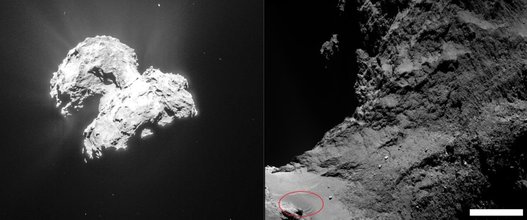
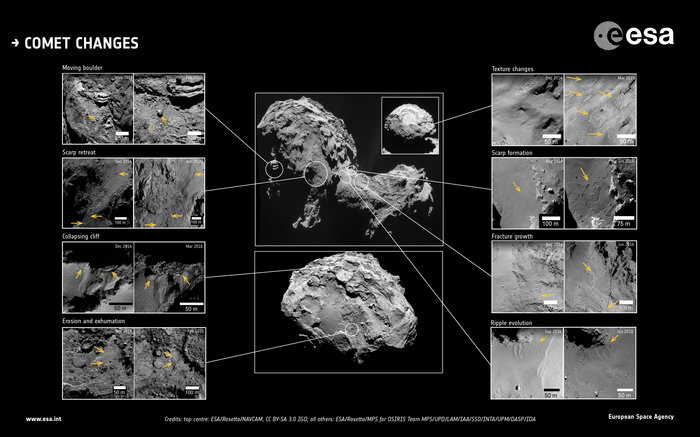
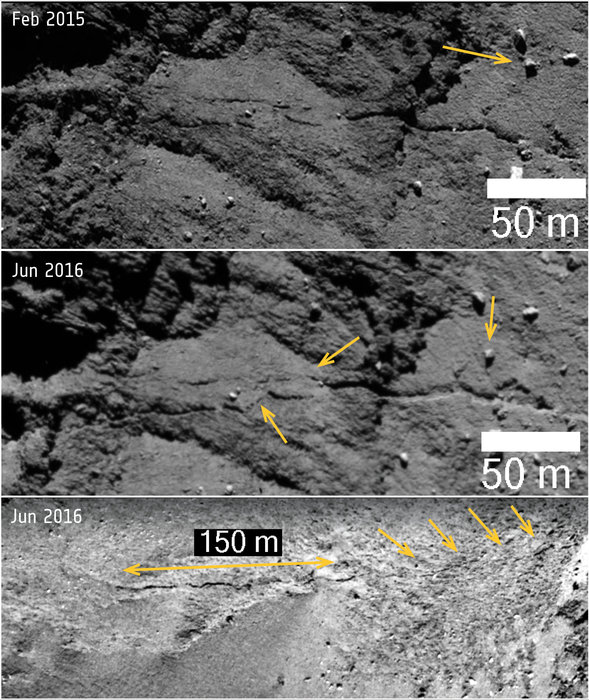
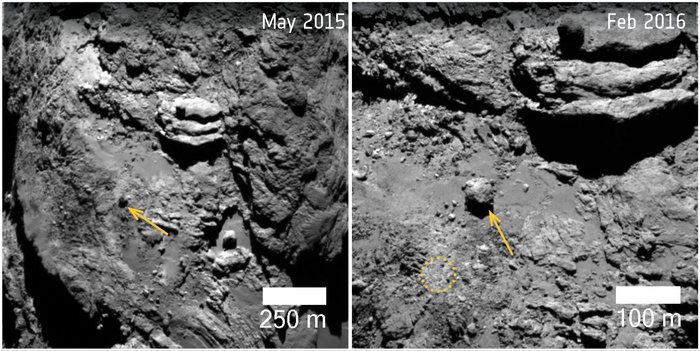
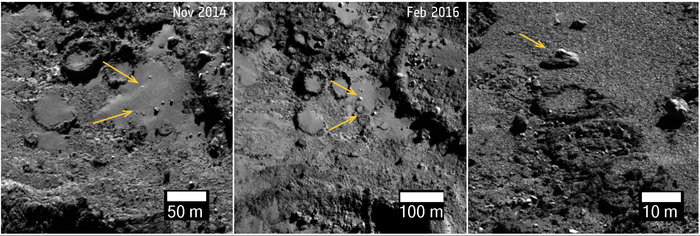
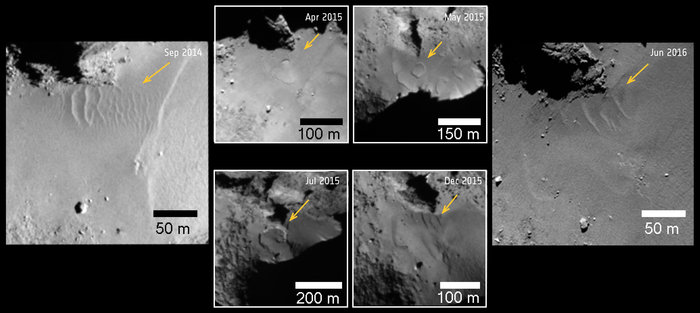
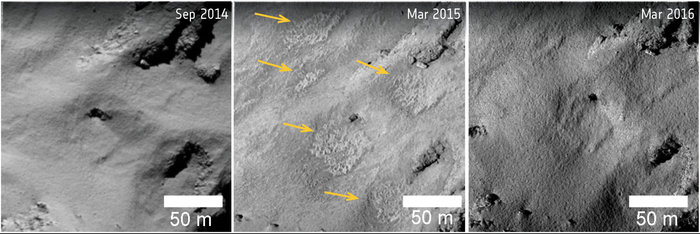

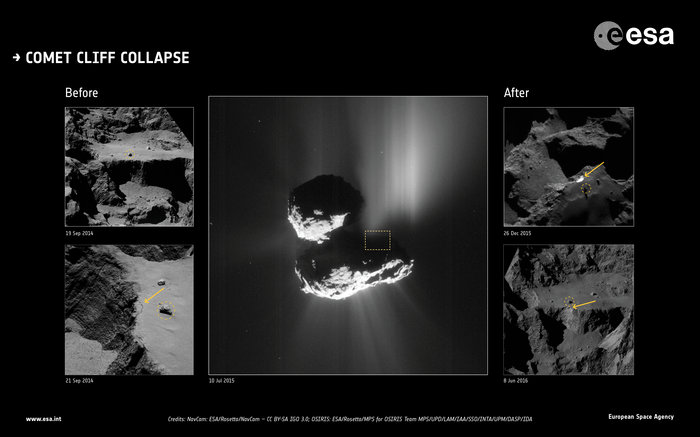

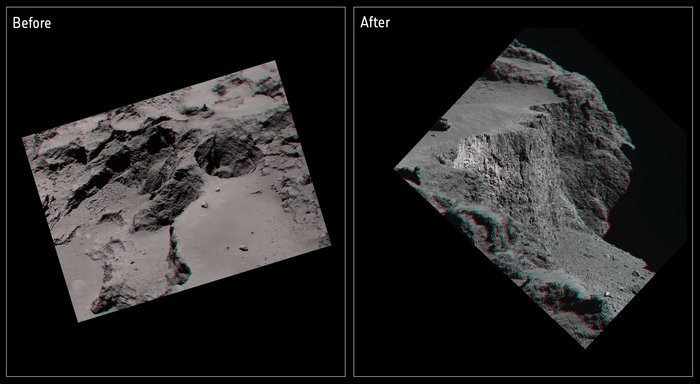
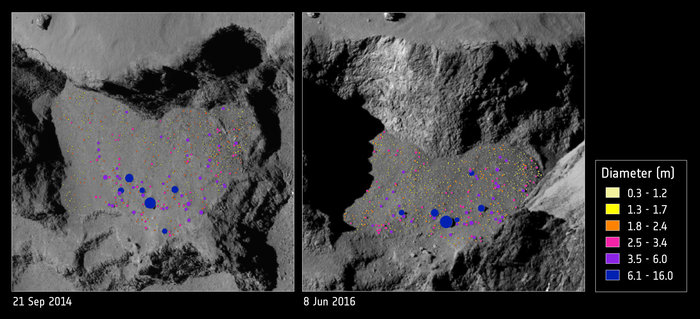
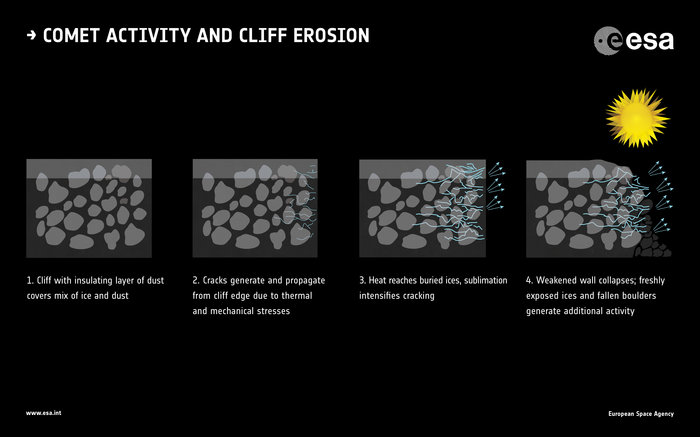


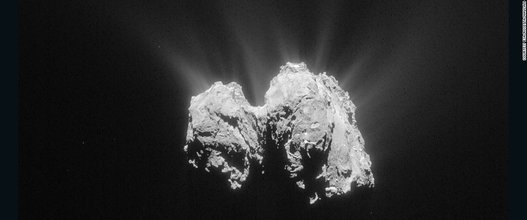
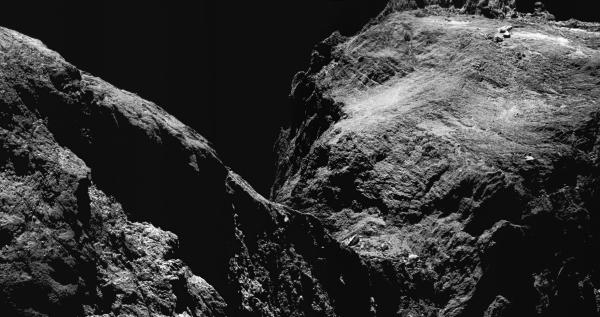
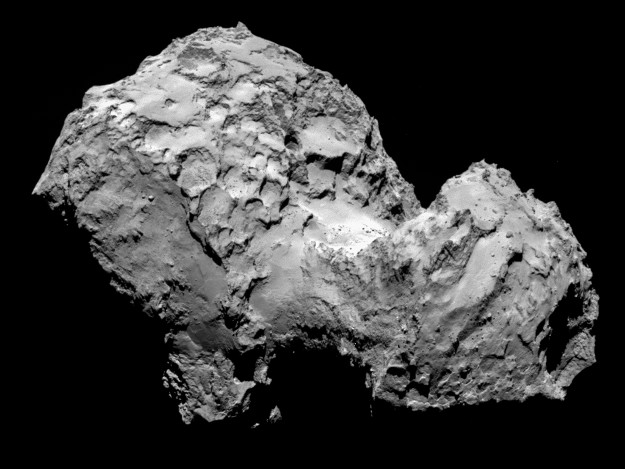
:quality(80)/cdn-kiosk-api.telegraaf.nl/deb221f6-a464-11e7-91ee-23d6014ce2b0.jpg)

